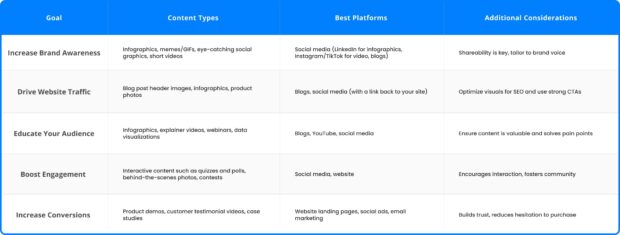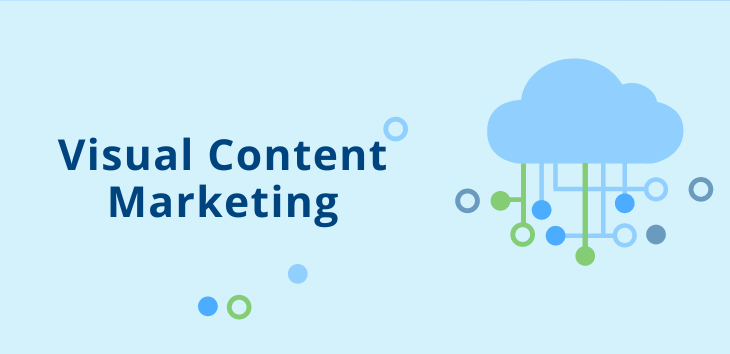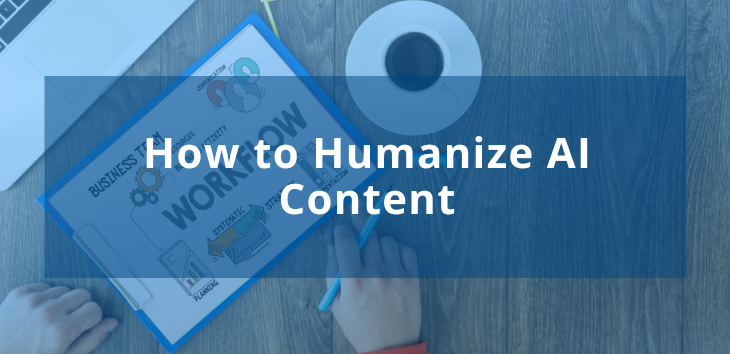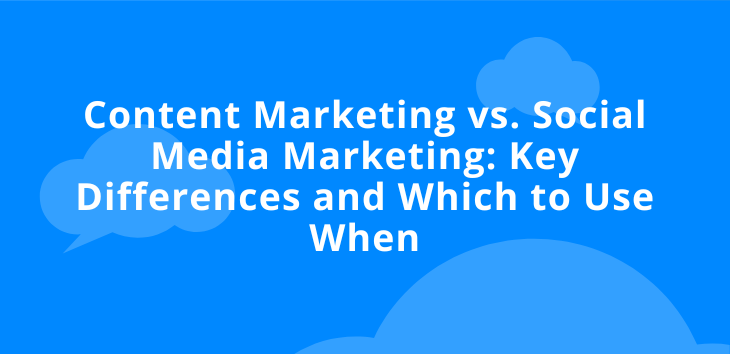Remember the last time you scrolled through social media and felt captivated by imagery? Perhaps it was a heartwarming video, a cleverly designed graphic, or a thought-provoking animation. Visual content marketing connects on an emotional level and leaves a lasting impression, even after words fade.
In this guide, we’ll share our comprehensive knowledge of visual content marketing. You’ll learn about the diverse types of visual content and how to use them strategically, explore real-world examples of successful campaigns, and discover a step-by-step process for creating your own robust strategy. We will discuss innovative tools, best practices for integration, and techniques for building trust using visuals.
Get ready to craft unforgettable brand stories using eye-catching visuals that resonate with your audience.
What Is Visual Content Marketing?
Visual content marketing is the strategic use of visuals to achieve your marketing goals. This includes images, videos, infographics, illustrations, and any other format that visually communicates your message.
Leverage imagery to:
- Quickly attract and retain the attention of fickle scrollers
- Simplify complex concepts and data
- Evoke emotions and build stronger brand connections
Images, graphics, and videos often convey information and drive action more effectively than text alone. Picture the difference between assembling new furniture using only written instructions versus diagrams or a video tutorial.
What’s more, visuals allow you to personalize your brand, fostering a deeper emotional bond with your audience. Authenticity is a game-changer for building trust and standing out in the increasingly crowded digital landscape.
Why Is Visual Marketing Important?
Our brains are wired for visuals. Since the dawn of humanity, we’ve communicated through visual storytelling. Cave paintings, hieroglyphs, and modern emojis all convey meaning and emotion universally. An innate preference for visual information shapes how our content consumption patterns today.
In particular, our brains process visuals 60,000 times faster than text. This has profound implications for today’s marketers. The benefits of visual content marketing include:
- Improving comprehension and recall: The brain processes visual communication better than text, which equals better information retention.
- Triggering an emotional response: Visuals evoke feelings, forming strong connections between your brand and your audience.
- Driving action: Compelling visuals, paired with clear calls to action, can increase engagement, clicks, and conversions.
Visual content marketing isn’t just a nice-to-have. It’s a necessity for brands that want to be seen, understood, and remembered.
Key Elements of Impactful Visual Content
Here’s what sets truly impactful visuals apart:
Clarity and purpose: Every piece of visual content should have a clear objective. Are you simplifying a complex process? Design an infographic to break it down. Highlighting a product’s features? Create a short, stylish product demo video. Understanding the “why” will ensure that every visual aligns perfectly with your brand goals.
Strong visual hierarchy: Don’t make viewers work. Guide their eyes effortlessly through your visual, emphasizing the most significant elements. Use strategic pops of color, bold typography, and clever composition to create a clear visual journey. Be sure to make your branding consistent across all channels to ensure a cohesive experience for the audience.
Visual storytelling: Even the simplest image can tell a story. For instance, a heartwarming social media image for an animal shelter could show a recently adopted pet with its loving family. This picture will trigger stronger emotions and inspire more engagement than text alone. Such visuals make your message more memorable and likely to prompt a response because they connect with your audience on an emotional level.
Related: Learn more about the power of narrative in our article, Unlock the Power of Digital Storytelling With a Content Marketing Strategy.
Authenticity: Move away from generic stock photos. Instead, create visuals that genuinely represent your brand and resonate with your audience. This builds trust and a sense of connection, both key ingredients for long-term success.
Accessibility: Don’t leave anyone behind. Consider users with visual impairments by ensuring all images have descriptive alt text and videos have closed captions and transcripts. This extends your reach and demonstrates that you’re a brand that cares.
Exceptional visual content requires more than a pretty picture. It’s a strategic combination of design, storytelling, and an understanding of how your audience engages with the world.
Types of Visual Content That Captivate and Convert
There’s a never-ending flow of content out there. According to experts at Yale, it’s visual elements that cut through and leave a lasting impression. Creating compelling visuals drives the conversions that supercharge your business and boost revenue. Let’s look at the most effective types of visual content.
Infographics
Infographics simplify complex data, statistics, or concepts into clear, concise summaries. Look at it this way: People are more likely to share a well-designed infographic than a wall of text. This expands your reach and earns your brand valuable exposure.
Critically, infographics make complicated topics easy to grasp. This is empowering for your audience, and it positions you as a trusted source of information.
Say we’re working with an online wellness brand. We might create an infographic for an article exploring the benefits of exercise. It would feature colorful illustrations, statistics, and simple explanations to show physical activity’s life-changing impact on health and well-being. Your audience might share the graphic on social media or their own website to educate their audience — promoting your brand at the same time.
Video content
Video content is the easiest way to unpack complex information, demonstrate expertise, and build a bond with your audience. Think dynamic product demos, engaging how-to videos, and behind-the-scenes glimpses that reveal your brand’s personality and offer a peek into the culture and people behind the products or services.
What’s more, videos excel in humanizing your brand. Authentic videos showcase your brand identity and offer social proof. Create videos that brim with passion, shoutout loyal customers, and help viewers solve common pain points.
For instance, if we were working with an HVAC company, we’d recommend they produce a series of short videos that provide troubleshooting tips. Each one would explain a common heating or cooling issue and guide homeowners through simple fixes. These videos save customers a service call, establish the company as go-to experts, and provide an opportunity to connect emotionally.
Interactive content
Interactive content creates two-way conversations with your audience. It encourages active engagement through quizzes, polls, interactive infographics, and calculators. Giving your audience something to click, answer, or play with keeps them on your page longer and increases their investment in your brand.
As a bonus, interactive content helps you collect zero-party data about your audience. Gain actionable insights into their preferences, pain points, and interests, and use those to inform future campaigns.
For instance, if we were working with a beauty brand with a blog post titled, “Find Your Perfect Skincare Routine,” we’d add a quiz. It would ask questions about skin type, major concerns, and product preferences, ultimately providing a customized routine at the end. This keeps customers on your page, builds trust, and drives product discovery.
Virtual reality (VR) and augmented reality (AR)
VR and AR push the boundaries of traditional marketing. VR immerses users in entirely digital environments, while AR overlays digital elements onto the real world. These technologies offer unparalleled opportunities for customer engagement and interactive experiences, especially for brands with products customers need to “try on” or visualize.
An excellent example is the augmented reality IKEA Place app. It lets customers virtually “place” furniture in their own homes before buying. This reduces uncertainty about size and fit, increasing confidence in purchase decisions. The concept is practical and innovative, and sets IKEA apart in a competitive market.
Memes and GIFs
Memes are funny viral images or videos with catchy text. GIFs are short, looping animations. Both are popular formats for infusing a dose of personality and relatability into your online presence.
[insert screenshot of meme and GIF]
The inherent shareability of memes and GIFs makes them powerful tools for organic brand growth. Their humor or relatability can tap into trending conversations and expand your brand’s reach organically. Plus, they add a relatable touch that’s more likely to connect with modern audiences than text alone.
Let’s say we’re working with a pest control company. To promote a blog post, we might create a meme to share on social media when we hit publish. It could be a cartoon of a startled homeowner facing a spider and a member of your staff holding pesticide, captioned “Say goodbye to your little friend.” This is funny, relatable, and nods to a familiar pop culture reference for maximum impact.
Never underestimate the effectiveness of humor and shareability. When done right, memes and GIFs humanize your brand and drive engagement with your audience.
Social media stories
Social media stories are short-lived, visually engaging posts on platforms such as Instagram, Facebook, and Snapchat. They exploit the FOMO (fear of missing out) factor, usually disappearing after 24 hours. Sharing limited-time offers, sneak peeks, and exclusive content via stories creates FOMO, driving engagement and quick action.
Starbucks is renowned for using Instagram Stories to promote seasonal drink launches. The brand creates visually enticing teasers with countdown graphics, fueling excitement and urgency. This motivates customers to visit their nearest Starbucks to try the new drinks before they’re no longer available, leveraging the FOMO effect to boost sales and customer interaction.
Data visualizations
Well-designed data visualizations make complex ideas easy to grasp. Additionally, visual data allows for quick identification of trends and patterns, catering to audience members seeking instant answers.
If we were helping a digital marketing agency design its annual report, instead of spreadsheets alone, we’d add a mix of eye-catching visuals, such as:
- An interactive timeline showcasing key milestones and major client wins over the past year
- A pie chart breaking down website traffic sources and highlighting growth areas
- A line graph comparing client ROI against industry averages, demonstrating their superior results
This approach establishes the agency as data-driven and transparent, building trust with investors and clients.
Embracing Technology in Visual Content Creation
The visual content landscape is constantly evolving, with new tools and technologies emerging regularly. While the convenience of AI-generated imagery is tempting, customers increasingly crave authenticity. Like stock imagery, AI-created visuals often lack the human touch and brand-specific details that resonate.
That said, AI isn’t the enemy. These tools can be valuable assets for:
- Creative inspiration: Use AI to generate new ideas, explore design variations, and overcome creative roadblocks.
- Placement and composition: Some AI tools can analyze existing imagery and suggest optimal layouts or color palettes, streamlining your workflow.
While AI is excellent at ideation, prioritize on-brand, human-made designs. They speak directly to your brand personality and build a stronger connection with your audience.
The Importance of Professionalism in High-Impact Visual Content
Using amateur visuals on your website is like showing up to a board meeting in sweatpants. On the other hand, professionally produced visuals command respect and make a strong first impression.
Here are a few more reasons why investing in pro-level design is a smart move:
- Brand guardians: Top-tier designers do more than enhance aesthetics; they fiercely protect your brand’s identity. Every image, graphic, and video feels undeniably yours, building recognition and trust.
- Attention to detail: Professional designers have mastered those tiny details that separate polished visuals from amateur ones. Perfect image resolution, balanced layouts, and fonts that amplify your message, not distract from it.
- Cutting edge insights: Skilled designers know how to translate your goals into visuals that resonate with the right people using the latest techniques. They know what grabs attention, feels trustworthy, and inspires action.
DIY visuals can have their place, but for high-stakes content such as your website or major campaign, leave it to the pros. It’s an investment that reflects your brand’s value and attracts the right customers.
CTA: Strategize Your Content to Complement Visual Marketing
Successful Visual Content Marketing Examples
Examining real-world success stories gives you valuable insights to use for your content marketing initiatives.
McDonald’s
McDonald’s tapped into anime’s rising popularity with a campaign that deeply resonated with a growing audience segment. The WcDonald’s campaign leaned into Studio Pierrot’s vibrant colors, iconic characters, and bold design elements.
Visual storytelling and brand integration
The campaign featured a series of short videos starring anime characters from shows such as Naruto and Bleach. The visuals stayed true to the original animations, fostering a sense of authenticity and nostalgia among fans. Subtle product placements, like characters eating McFlurries, were smoothly woven into the storyline, making McDonald’s presence natural rather than intrusive.
Social media frenzy and fan engagement
A ton of WcDonald’s videos went viral on social media. The eye-catching visuals, combined with the novelty of seeing beloved characters in a fast-food setting, sparked a wave of excitement and online discussion. Fans created and shared memes, fan art, and cosplay photos, further amplifying the campaign’s reach and engagement through user-generated content (UGC).
Spotify
Spotify’s annual Wrapped campaign is a cultural phenomenon that highlights the power of personalized content and community engagement. It’s widely anticipated and shared, teaching invaluable lessons to anyone seeking to level up their visual marketing game.
Visual storytelling powered by data
Spotify transforms raw listening data into a compelling story about each user’s year in music. Instead of providing a list of statistics, the brand crafts vibrant personalized infographics highlighting top songs, artists, genres, and total listening time. Bold colors, playful animations, and a shareable format create an experience that’s informative and fun.
Interactive and shareable for maximum impact
Wrapped’s success lies in the fact that it invites interaction. The format guides users through their musical recap using dynamic transitions and instilling a sense of discovery. Most importantly, these infographics are designed for social media sharing. It’s a subtle yet effective way to turn users into brand ambassadors and encourage conversation between followers.
Building anticipation and community
Every December, music lovers around the world buzz with anticipation for Spotify Wrapped. The brand fuels excitement with social media teasers, countdowns, and hints, and they’ve managed to transform it into an annual event. When Wrapped finally goes live, it becomes a global conversation starter, with users eagerly comparing their streaming habits with others. This shared experience solidifiesSpotify’s role as a connector and curator of personalized music experiences.
How Do You Use Visuals in Marketing?
Visuals aren’t just eye candy. They’re powerful tools for achieving your marketing objectives. Here’s your roadmap to success with visuals:
- Define your goals: What do you want your visuals to do? Is it increasing web traffic, enhancing brand awareness, or boosting sales? Clarity is everything when it comes to choosing the right formats.
- Understand your audience: What are your audience’s pain points and preferred digital spaces, and what kind of visuals resonate with them? Tailoring your approach will yield maximum impact.
- Build brand consistency: Every visual should feel like it undeniably belongs to your brand. Maintain a cohesive color palette, font choices, and overall aesthetic. Consistency builds recognition and trust.
- Choose wisely: Think of each visual type as having a specific superpower. Need to simplify a complex topic? Infographic. Want to be meme-able and get shares? GIF. Match the visual type to the goal.
- Know the rules: Each social platform has its own preferences and peculiarities. Research image size requirements, optimal video lengths, and what looks best on each platform.
- Quality matters: Sloppy visuals reflect poorly on your brand. Ensure that each visual is crafted with care, from resolution to framing, to maintain a professional appearance in all your marketing efforts.
- Analyze and optimize: Track your KPIs. Are your infographics driving traffic? Do your video demos increase sales? Use data to pinpoint what works, ditch what doesn’t, and refine your strategy over time.
Download our checklist for clear guidance on which content types and platforms to use for common content goals.

How to Craft Your Visual Content: Tools, Tips, and Tactics
Below, we’ll break down tools and tactics that will help you bring content to life.
Integrating visual content marketing into your marketing mix
Here are some tips for strategically integrating visuals and making maximum impact:
- Repurpose: An effective way to extend the life and value of your visual content is through repurposing. One impressive infographic can become multiple social media posts, a blog header, and a slide for a presentation. This approach maximizes your investment and ensures consistency across different platforms. Think creatively to get the most mileage from your best content.
- Your website is home base: It’s your brand’s online storefront. Optimize visuals for your website to improve user experience, boost SEO, and drive conversions. Make sure visuals on your website are optimized for fast loading, appropriately tagged for SEO, and aesthetically aligned with your brand identity.
- Don’t forget email: Email marketing works best when it has visual oomph. Break up text with eye-catching images, GIFs, and short videos relevant to your customer base.
Choose the right tools for effective visual content marketing
No matter your skill level or budget, there are visual content creation tools you can use to bring your creative vision to life.
- Pros: User-friendly with tons of templates and a wide range of content types, even with the free version. AI tools make complex design features accessible to amateurs.
- Cons: Limited customization options, although paid plans unlock more elements and features
- Best for: Anyone focused on social media graphics, simple infographics, and presentations. It’s also particularly useful for marketers and business owners who need to produce attractive visual content quickly and without extensive design training.
- Pros: Gold standard in the industry with unmatched creative control, customization, and polish
- Cons: Expensive with a steep learning curve, which can be overkill if you don’t require the full suite of programs
- Best for: Professional designers and those needing advanced image-editing capabilities. It’s the go-to choice for high-end content creation that demands meticulous detail and complex compositions.
- Pros: Infographic-specific templates and tools make it much easier than starting from scratch with design software.
- Cons: Designs can feel template-y and it’s limited to infographics and data visualization.
- Best for: People who create infographics regularly but don’t have professional graphic design skills
- Pros: Turns text into videos quickly, and good for repurposing blog posts and creating shareable social clips
- Cons: Limited customization options, free version has a watermark, and some features are paywalled
- Best for: Content creators who want simple video creation for social media — ideal when speed is key
Imagery evokes feelings that can get lost with words. Use these tools to make visual content that builds trust, makes your brand relatable, and builds a community around your brand.
Leverage visual content for brand amplification
Imagery is an impressive tool for brand amplification. Think of your logo, colors, and overall visual style as your brand’s uniform. When those elements are consistent across your visual content messaging, they become instantly recognizable signatures that identify all communications as distinctly yours. Recognition equates to trust over time, positioning you as a leader in your space.
In a world overflowing with information, strong visuals help you stand out, build meaningful connections, and leave a lasting mark on your audience.
The Creation Process: DIY vs. Professional Visual Content
Do you go the DIY route or outsource to professional designers? There’s no one-size-fits-all answer. Here’s how to decide what’s right for your brand:
- DIY pros: Budget-friendly, full creative control, and ideal for making simple visuals
- DIY cons: Requires time investment, potential for less-polished results, and possible steep learning curve. This could become a drawback if your team already has a full workload.
- Outsourcing pros: High-quality outcomes and access to specialized skill sets, freeing up your time
- Outsourcing cons: More expensive, with potential for miscommunication if you don’t have clear brand guidelines and expectations. Relying on external resources might also lead to delays or challenges in project timelines if not managed properly.
Find a balance that works for you. Consider your budget, resources, visual content needs, and internal skill sets when making this call. Also keep in mind that you can mix and match, handling some things in-house and outsourcing big ticket projects.
How Do You Measure the Success of Visual Content?
Measuring visual content effectiveness gives you the power to optimize your strategy and achieve your business objectives. By tracking specific metrics, you can gather insights into how your visuals are performing and make informed decisions to enhance their impact.
Metrics to track include:
- Engagement: Likes, comments, shares, and saves
- Reach and impressions: How many people see your content?
- Website traffic: Click-throughs from visuals to your site
- Conversions: Did visual content contribute to sales/leads?
Say a fashion brand notices its product demo videos get significantly more shares and website clicks than static product photos. This insight tells them to allocate more resources to creating video content, ultimately driving better results.
Your Visual Content Marketing Strategy
Your visuals are competing for people’s attention in a crowded space. Generic content gets ignored, while standout visuals make people stop scrolling and engage.
For your visual marketing strategy to be effective, you need to know your audience inside and out. What grabs their attention? What makes them stop and think? Use visuals to tell your brand story in a way that connects authentically and resonates deeply. Do this well, and your visuals will build instant recognition and help you achieve your goals.
This guide has armed you with the tools and knowledge to take your visual content to the next level. Experiment, analyze results, and let your audience show you what works best. With solid strategy and a dash of creative flair, visuals can tell your unique story and propel your brand forward.




